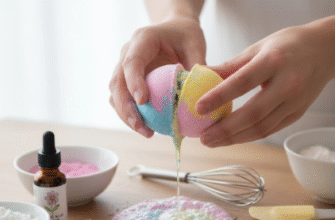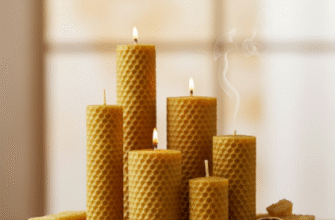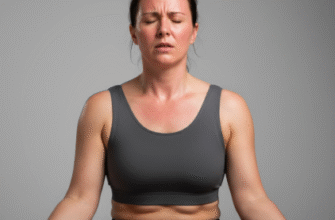There’s a universal sigh of relief that often accompanies slipping into a robe. It’s more than just changing clothes; it’s a transition, a shedding of the day’s demands and an embracing of personal comfort. Whether it’s the plush hug of terry cloth after a shower, the smooth glide of silk on a lazy morning, or the comforting weight of fleece on a chilly evening, robes hold a special place in our quest for coziness. But why? What is it about these simple garments that resonates so deeply with our need for relaxation and security? The answer lies in a fascinating blend of sensory experience, psychological association, and the quiet ritual of self-care.
The Sensory Embrace: More Than Just Fabric
Our relationship with robes often begins with touch. The skin, our largest organ, is incredibly sensitive to texture and temperature. The fabrics typically used for robes – soft cotton, absorbent terry, luxurious silk, warm fleece, breathable linen – are chosen specifically for their pleasant tactile qualities. This focus on touch taps into fundamental human needs.
Warmth and Weight: Many robes provide a gentle warmth and a comforting weight. This sensation can mimic the feeling of being held or swaddled, activating the parasympathetic nervous system, which is responsible for rest and relaxation. Think of the calming effect of a weighted blanket; a heavy robe can offer a similar, albeit lighter, sense of grounding and security. It creates a physical barrier between us and the outside world, a soft fortress of solitude.
Softness: The preference for softness is deeply ingrained. Soft textures are inherently non-threatening and comforting. They evoke feelings of safety, gentleness, and care. Running your hand over a velvety robe or feeling soft cotton against your skin can be inherently soothing, reducing stress signals in the brain. This sensory input directly contributes to the feeling of ‘coziness’ – a state of comfortable contentment.
Beyond the Fabric: Psychological Anchors
While the physical sensations are paramount, the psychological power of a robe extends far beyond its material qualities. Robes become imbued with meaning, acting as powerful symbols and triggers for specific mental states.
A Shield of Comfort and Security
In a world that often demands we present a polished, sometimes guarded, exterior, the robe represents a retreat into authenticity and vulnerability – but on our own terms. It’s worn in our private spaces, away from public scrutiny. This association with safety and privacy makes the act of putting on a robe feel like stepping into a personal sanctuary. It offers a form of emotional armor, shielding us not from physical harm, but from the stresses and expectations of the outside world. It’s a signal to ourselves that we are ‘off-duty’, safe within our own domain.
The Ritual of Relaxation
Humans are creatures of habit, and rituals play a significant role in structuring our lives and signaling transitions. Changing into a robe can become a powerful behavioral cue, marking the shift from work or obligation to rest and leisure. Like Pavlov’s dogs associating the bell with food, we can associate the robe with relaxation. The simple act becomes a ritual: shedding the day’s attire is shedding the day’s stress, and donning the robe is consciously stepping into a state of ease. This ritualistic aspect helps to mentally prepare us for downtime, making relaxation more intentional and effective.
Studies in sensory psychology highlight the profound impact of tactile stimuli on our emotional state. Soft, comfortable textures, like those found in many robes, can genuinely lower stress responses. This occurs because pleasant tactile sensations can trigger the release of neurochemicals associated with calm and well-being. Therefore, the comfort derived from a robe isn’t just perceived; it has a physiological basis rooted in our nervous system’s response to touch.
Symbol of Self-Care and Indulgence
Wearing a robe often ties into acts of self-care. We wear them after a relaxing bath, while enjoying a slow morning coffee, or when settling down with a good book. They become associated with these moments of deliberate slowness and personal attention. In this context, the robe transforms from a mere garment into a symbol of prioritizing one’s own comfort and well-being. It can feel like a small act of luxury, a permissible indulgence in a busy life. Choosing to wear a robe can be a statement that says, “I deserve this moment of peace.”
Freedom and Non-Judgment
Unlike structured clothing – tailored suits, fitted dresses, stiff jeans – robes offer unparalleled freedom of movement. They don’t constrict, pinch, or demand a certain posture. This physical freedom translates into a kind of psychological freedom. There’s no worry about whether it ‘looks right’ or fits perfectly according to external standards. A robe is inherently forgiving and accepting, mirroring the state of relaxation we seek while wearing it. It allows us to simply be, without the self-consciousness that other clothing can sometimes induce.
Weaving Comfort into Culture
While our modern bathrobes are relatively recent inventions, the idea of loose, comfortable garments worn in private or during leisure is ancient. Throughout history and across cultures, variations of robes, kimonos, caftans, and dressing gowns have served similar purposes: providing comfort, signifying status or relaxation, and marking a transition from public to private life. This long history suggests that the appeal of such garments taps into something fundamental about the human desire for ease and a distinct separation between our different spheres of life.
The Fabric of Coziness
The sheer variety of robes available speaks to the nuanced ways we seek comfort:
- Plush Terrycloth: Absorbent and warm, perfect for post-bath coziness, offering a hug-like weight.
- Waffle Weave: Lighter and breathable, often associated with spas, providing texture without excessive heat.
- Silk or Satin: Smooth and cool, evoking luxury, elegance, and a lighter sense of indulgence.
- Flannel or Fleece: Warm and soft, ideal for combating cold, offering maximum insulation and snugness.
- Linen or Light Cotton: Breathable and airy, suited for warmer climates or those who prefer minimal weight.
The choice often depends on the specific type of comfort sought – the enveloping warmth of fleece on a winter night is different from the cool glide of silk on a summer morning, yet both fulfill the core purpose of enhancing personal ease.
Conclusion: Wrapped in Well-Being
The enduring love affair with robes isn’t just about staying warm or covering up. It’s a complex psychological phenomenon rooted in our sensory needs, our learned associations, and our rituals. A robe is a tactile delight, offering softness, warmth, and a comforting weight that can genuinely soothe the nervous system. It’s a psychological signal, marking the transition to safety, privacy, and relaxation. It’s a symbol of self-care, a permission slip to unwind and indulge in personal comfort. It offers freedom from the constraints of more formal attire and the judgments that can accompany it. Slipping into a robe is a simple act, yet it engages multiple levels of our being, wrapping us not just in fabric, but in a profound sense of ease and well-being. It’s the psychology of coziness, embodied in a single, beloved garment.








